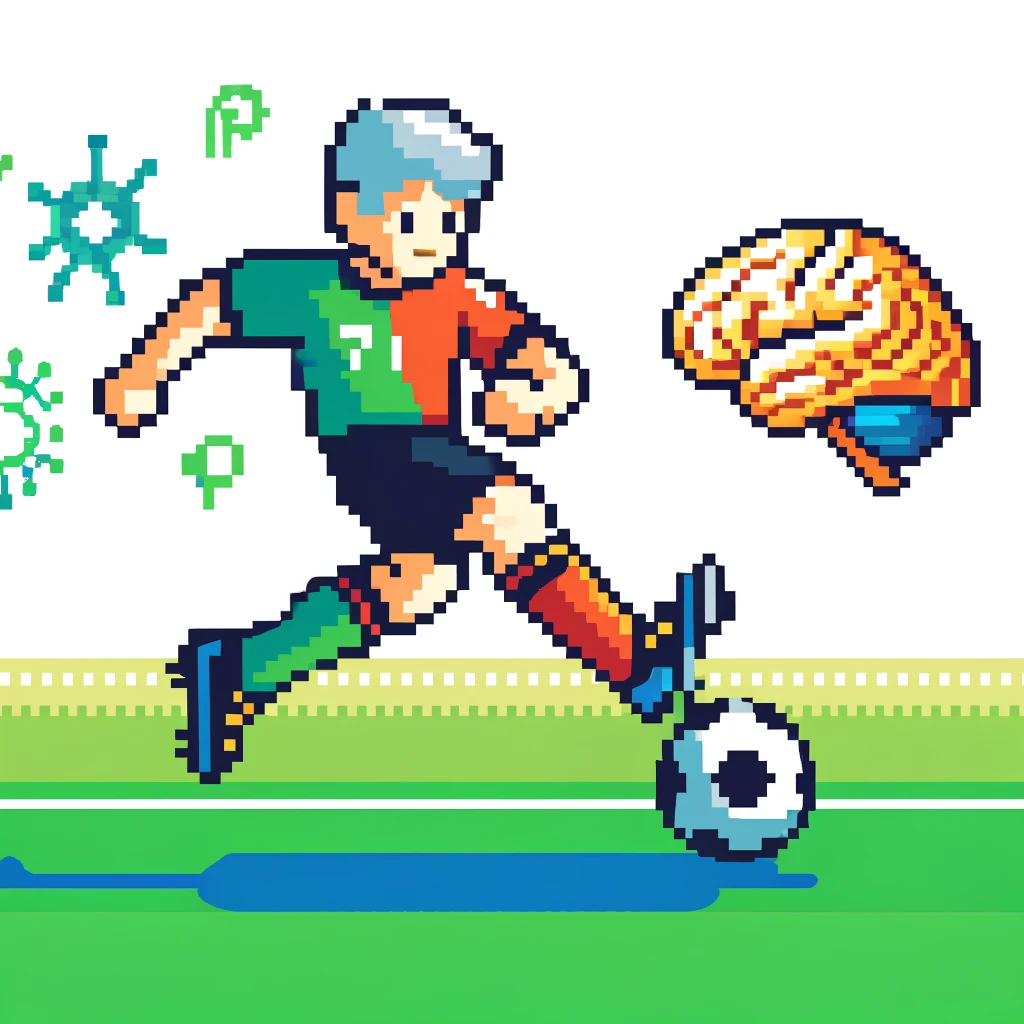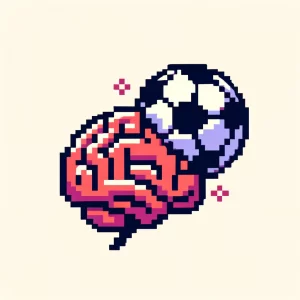
Soccer and Brain Health: Unpacking the Risks and Benefits
Soccer, a sport cherished worldwide with over 270 million players, is known for its dynamic play and global appeal. While the physical and mental health benefits of soccer are widely recognized, emerging research also highlights potential neurological risks associated with repetitive head impacts, such as those from heading the ball. This blog post explores the dual-edged sword of soccer’s impact on brain health, drawing attention to both its benefits and the need for preventative measures against brain injuries.
The Benefits of Soccer for Brain Health
Soccer isn’t just a fun and engaging sport; it’s also beneficial for the brain. Physical activity, such as running and playing soccer, is known to promote neurogenesis—the formation of new neurons—and enhance brain blood flow. These benefits are crucial not only for improving cognitive functions but also for reducing cognitive decline associated with aging.
Regular physical activity can increase the volume of the hippocampus, the area of the brain associated with memory and learning, by up to 2%. This increase is linked to improved memory and attention skills, particularly in older adults, and may also lower the risk of developing neurodegenerative diseases like Alzheimer’s and Parkinson’s Disease.
The Risks: Concussions and Chronic Traumatic Encephalopathy (CTE)
Despite the health benefits, soccer players face neurological risks, primarily due to repetitive head impacts from heading the ball. While soccer involves less frequent concussive impacts compared to sports like American football or boxing, the practice of heading can lead to sub-concussive impacts. These are less severe but can accumulate over a player’s career, potentially leading to chronic issues such as chronic traumatic encephalopathy (CTE) and other neurological sequelae.
CTE, a condition historically associated with boxing and more recently with other contact sports, is characterized by the buildup of abnormal proteins in the brain, leading to symptoms such as memory loss, confusion, impaired judgment, and progressive dementia.
Addressing Soccer-Specific Risks
The research underscores the need for comprehensive strategies to manage and mitigate head impacts in soccer. This includes promoting safer playing techniques and considering the use of protective headgear, although its effectiveness remains a topic of debate.
Moreover, educating players, coaches, and officials about the signs of concussions and the importance of appropriate response strategies is crucial. Ensuring that players with suspected concussions receive proper medical evaluation and adhere to a protocol for return to play is essential in preventing further damage.
Implications for Soccer Coaching and Player Development
For coaches and sports organizations, the findings highlight the importance of integrating brain health considerations into training and gameplay strategies. This involves not only enhancing the physical aspects of soccer training but also implementing preventive measures to protect players from head injuries.
Training programs might need to incorporate exercises that strengthen neck muscles, potentially reducing the risk of head injuries. Additionally, adjusting ball size and pressure for younger players could help mitigate the risk of head impacts.
Engaging the Soccer Community
Addressing these risks isn’t just a task for medical professionals and sports leagues; it requires community engagement and awareness. Soccer clubs and associations can lead the way in educating their communities about the benefits and risks associated with the sport and advocating for safer playing practices.
Conclusion: A Balanced View on Soccer and Brain Health
While soccer offers significant health benefits, it is not without its risks. By taking proactive steps to minimize the risks of head injuries, the soccer community can help ensure that the sport remains safe and enjoyable for all players. Continued research and education on this topic are vital in navigating the complexities of soccer and brain health.
Are you ready to delve deeper into the science and strategy of soccer?
This Week in Soccer offers you a unique blend of expert analysis, engaging infographics, and practical insights. Subscribe to our newsletter and stay ahead of the game with the latest in soccer analytics and coaching strategies. Make the move from spectator to strategist. Subscribe now!
About the Author
Jon Scaccia is a youth soccer coach and translational scientist. He has worked with the Exeter United Soccer Club for over five years, focusing on U5 development. In his day job, he works in data evaluation and implementation science.



